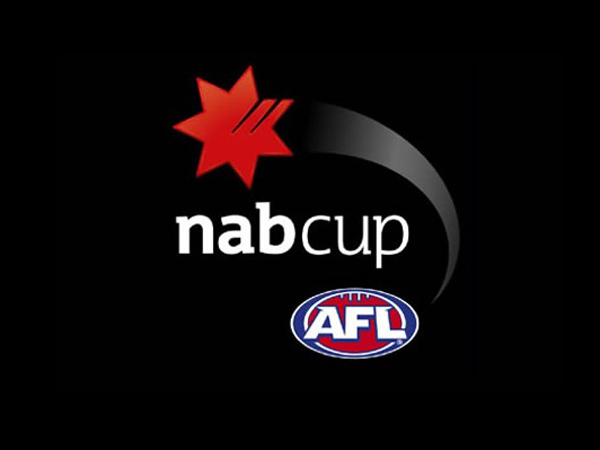
The validity of pre-season form is somewhat of a mystery.
It’s common practice to judge NAB Cup results with a degree of skepticism, based on the perception that there is no link between pre-season success and home and away season success or improvement.
‘Don’t read too much into it’ is regularly uttered, dismissing team performances and instead primarily analysing individual players and alterations to gameplans.
But contrary to such beliefs, recent history shows that the NAB Cup can be a springboard towards the top of the premiership pile.
In the NAB Cup competition from 2008 – 2011, 14 of the 16 sides that made it to the semi-final stage finished in the top eight at the end of the home and away season.
More notably, nine of those 16 sides improved their ladder position from the previous year, with three others at least equaling their place in the pecking order.
There were significant ladder climbers, none more so than West Coast in 2011. Switching from one-on-one to the contemporary forward press defence, combined with the return of several elite senior bodies from injury, the Eagles jumped from wooden spooners in 2010 to preliminary finalists in 2011.
Their resurgence started in pre-season.
Across the four seasons being considered, the 16 NAB Cup representatives account for four preliminary finalists, two grand finalists and two premiers (Hawthorn in 2008 and Geelong in 2009) in the finals proper.

Given the widely accepted stigmas and flippant treatment of the NAB Cup, these facts are mind blowing. It is overwhelming evidence that suggests NAB Cup form leads to home and away victories and a trip deep into September.
So why do coaches, players and supporters continue to scoff and insist on its irrelevance?
Each club has their own agendas and programs in pre-season mode. There are different goals to achieve and different issues to resolve in the pursuit of excellence.
However, there are some broader commonalities.
All clubs openly declare their focus is on round one rather than pursuing March silverware, while they all give young talent time on the park, fine tune their ‘structures’ and allow players returning from injury to slowly reacclimatize to match intensity.
What this tells us is that because the majority of teams are performing with similar mindsets fundamentally unrelated to getting wins on the board, NAB Cup form isn’t held in a high regard.
But it may be telling us something else entirely.
Perhaps strong NAB Cup form leads to positive regular season results because the more talented and healthy lists typically take the points in pre-season when sides are, for the most part, equally unflustered by the result and are playing with similarly diminished intent.
It must also be acknowledged that there is examples of clubs playing with a distinct hunger and vigour to win in the NAB Cup too, it’s just more of a rarity.
The occurrence is often fuelled by a substandard previous season, or a change in coaching or playing personnel, creating a desire to build a ‘winning culture.’
Essendon in 2011 stormed into the pre-season under new coach and club champion James Hird. With a renewed emphasis on defence and pressure following Matthew Knights’ attacking style, the Bombers were hell-bent on reclaiming respect in the football world.
They were outgunned in the NAB Cup grand final by a powerful Collingwood outfit, but the Don’s pre-season momentum propelled them into the top four until round 10.
While Collingwood won on the back of their elite talent, healthy list and dominant gameplan, Essendon’s intent was the major catalyst for their ability to bridge the gap and challenge the 2010 premiers.
Numbers never lie, and in recent times they clearly advocate that pre-season form is a legitimate, positive reflection on a team’s preparation and readiness for the season proper. But it’s by no means a death march for those who didn’t shine, which could provide the answer to the question posed earlier.
Those that are flying know there is no guarantees and are keen to keep a lid on expectations. The rest are satisfied that they will produce the goods when it matters most. Ultimately, winning isn’t the definitive factor in declaring pre-season satisfaction.
In 2012, the NAB Cup was re-structured. Instead of a knockout system, the top two teams after four matches earned their place in the grand final.
Adelaide finished first and hosted West Coast, with the Crows winning by 34 points.
Six months later, Adelaide were one kick from a grand final appearance – overpowered in the dying stages by Hawthorn, while West Coast were overrun by an emotionally charged Collingwood in the semi-finals.
In fact, the top five of the 2012 pre-season ladder featured heavily when the whips were cracking late last year.
Premiers Sydney, grand-finalists Hawthorn, preliminary-finalists Adelaide and semi-finalists West Coast and Fremantle foreshadowed their season path in the NAB Cup.
All the evidence certainly bodes well for 2013 NAB Cup grand finalists Brisbane and Carlton, as well the five sides that only missed out on percentage – Geelong, St Kilda, Richmond, Collingwood and North Melbourne.
Heading into the 2013 home and away season and beyond, cast a more watchful eye over the pre-season. It can serve as a useful crystal ball.
Paul Bastin is a final-year Bachelor of Media Studies student at La Trobe University and upstart’s sports editor. You can follow him on Twitter: @PaulBastin10







